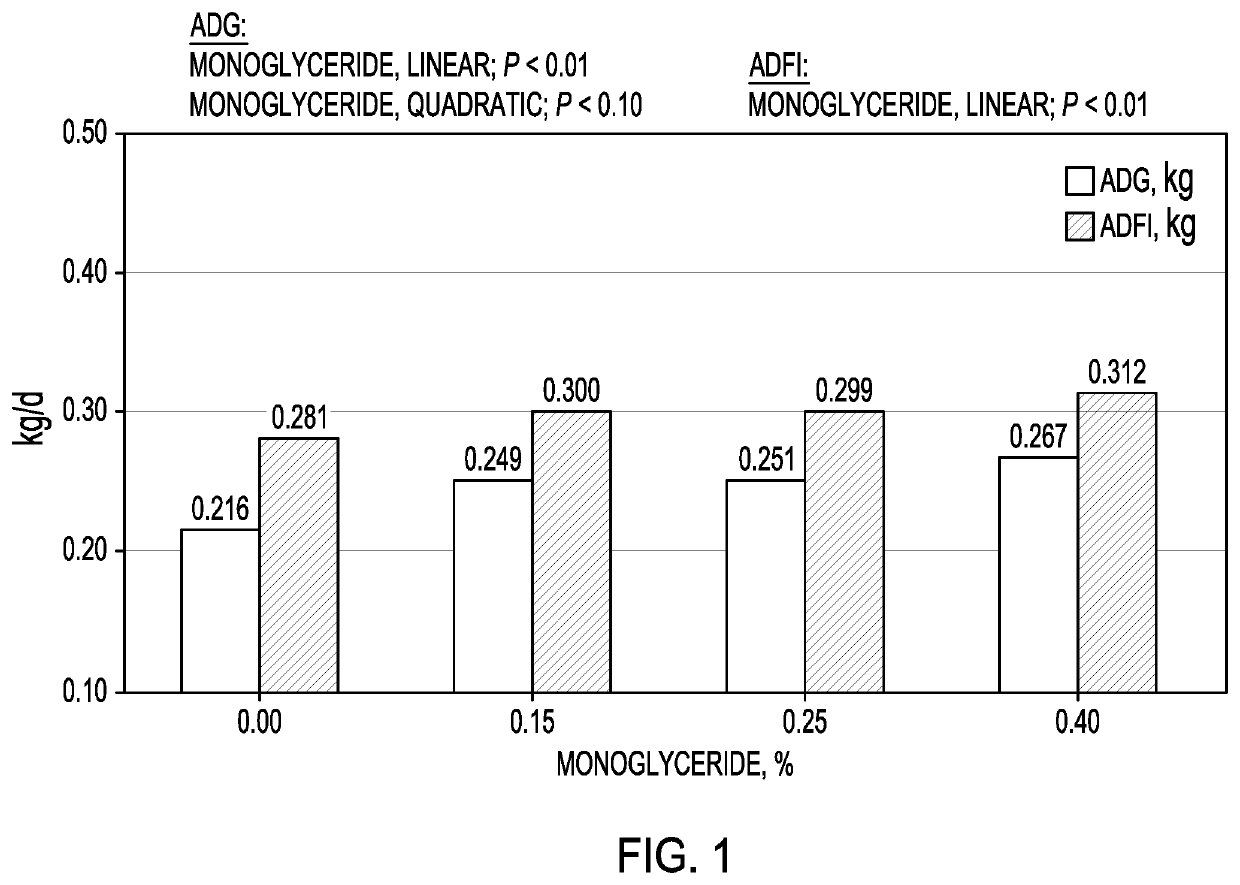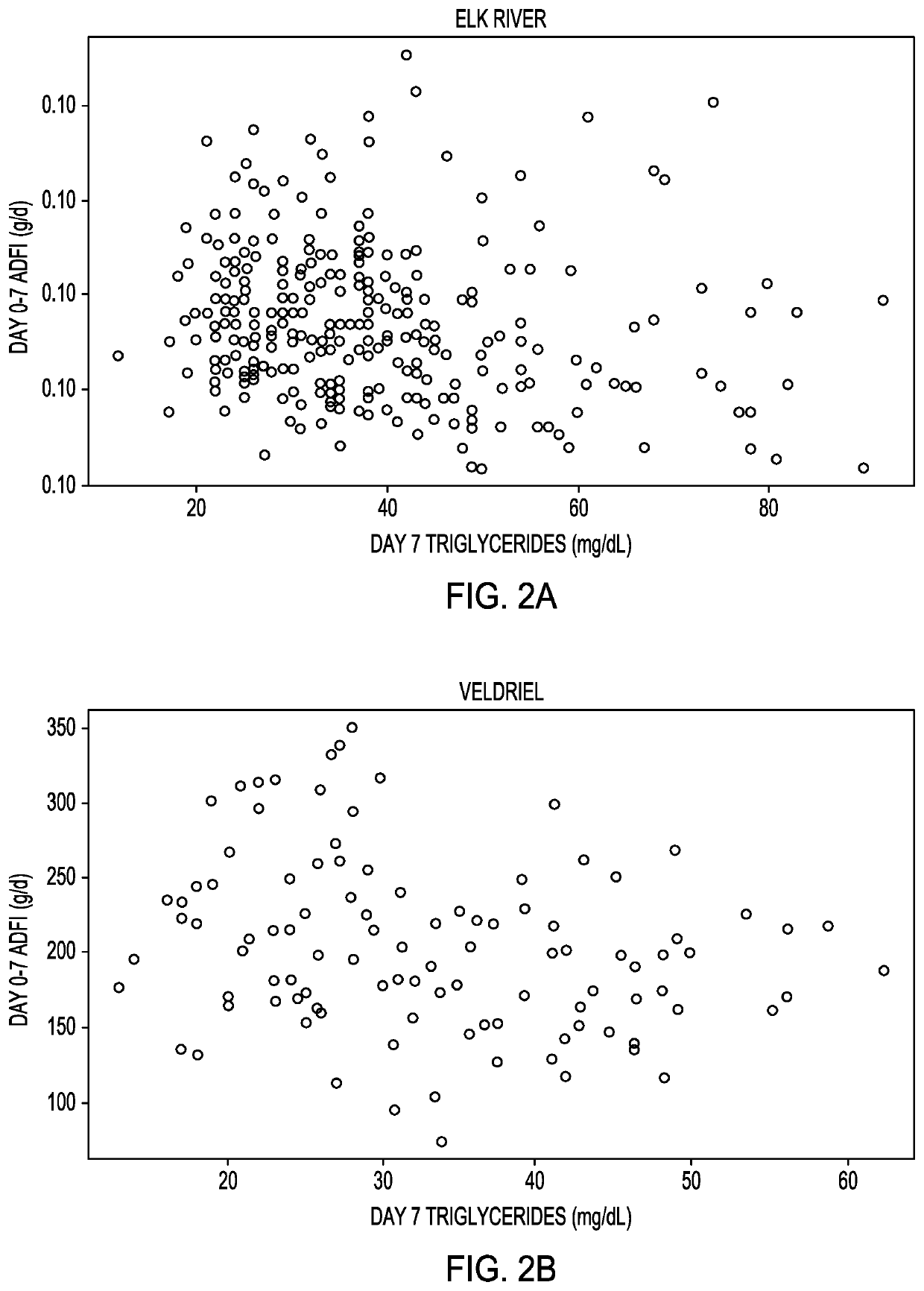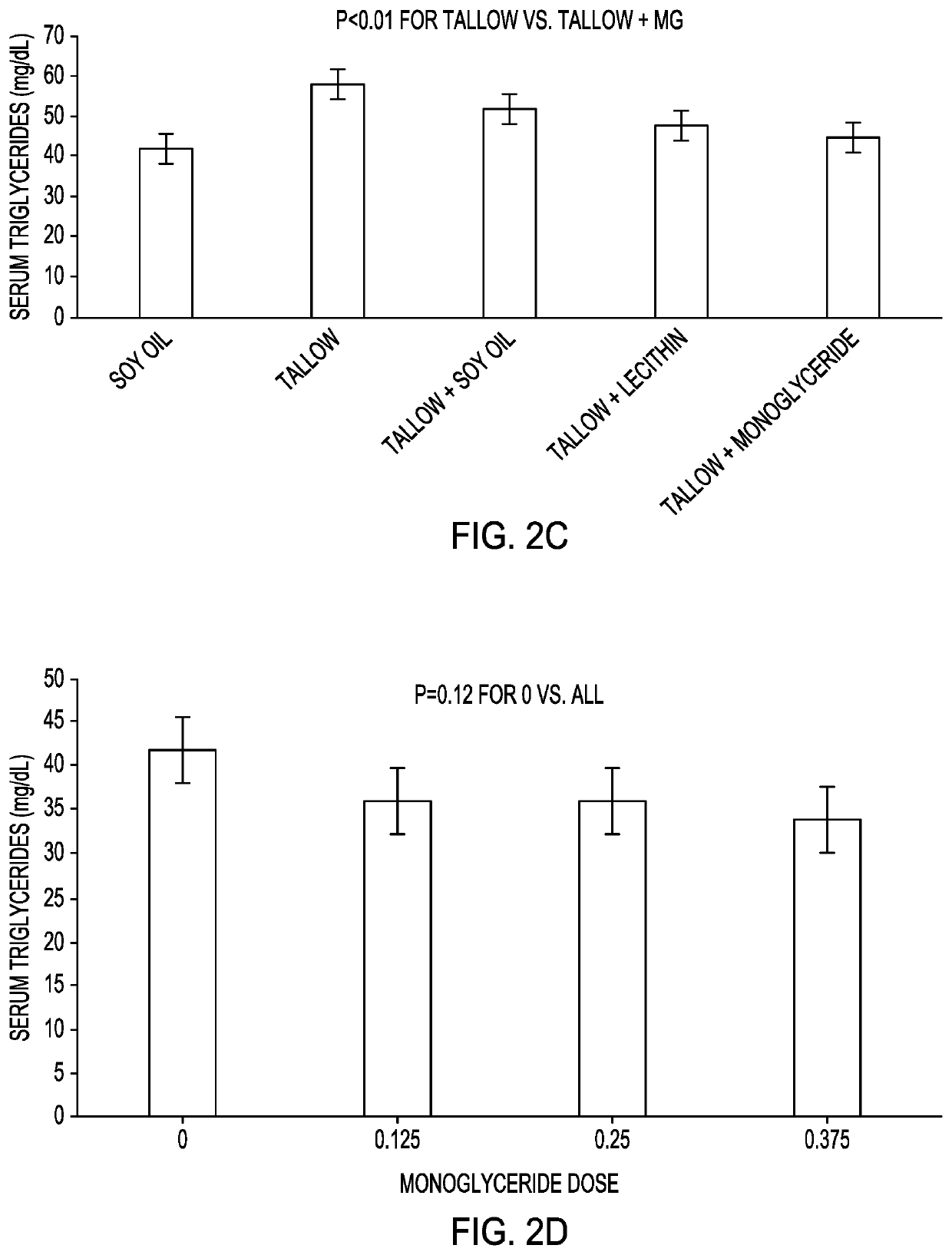Monoglyceride use in animals
a technology of monoglyceride and animal body, applied in the field of monoglyceride use in animals, can solve the problems of increasing morbidity and mortality, pigs cannot use post-weaning lipids, and it takes one to two weeks to return to pre-weaning dry matter intak
- Summary
- Abstract
- Description
- Claims
- Application Information
AI Technical Summary
Benefits of technology
Problems solved by technology
Method used
Image
Examples
example 1
Monoglyceride on Performance
[0061]A 42-day trial (experimental diets feed for 21 days) with initial body weight of 6.7 kg contained treatments with and without monoglyceride in diets with pharmacological ZnO. Inclusion of monoglyceride increased 0-21 day gain and intake by 6.1 and 3.6%, respectively. At the end of the 42-day trial pigs were 0.8 kg heavier. Monoglyceride purity was >90% and fatty acid profile is in Table 2 as Example 1.
example 2
Monoglyceride on Intake and Gain
[0062]A 42-day trial with initial body weight of 6.2 kg contained treatments with and without monoglyceride in diets with pharmacological ZnO. Inclusion of monoglyceride increased 0-22 day gain and intake dose dependently. The largest improvements were at 0.25% inclusion increasing intake and gain from 0-22 days by 18.6 and 19.1%, respectively. Monoglyceride was included at 0, 0.25, 0.5, and 1.0% of the diet. The monoglyceride was >90% purity and is Example 2 in Table 1. Additional data was collected in the trial from pelleting the diets and it appeared that inclusion of monoglycerides decreased pelleting amps (i.e., energy needed to pellet the diet).
example 3
Monoglycerides on Piglet Performance
[0063]A 42-day trial with initial body weight of 7.1 kg contained a control and three monoglycerides. The first monoglyceride was a monoglyceride that is >90% purity and the fatty acid profile is Example 3 in Table 2. The second monoglyceride is a glycerol monolaurate that is >90% glycerol monolaurate. The third monoglyceride was a glycerol monostearate that is 85% monoglyceride, 10% diglyceride, and 2% triglyceride. The fatty acid profile for the second two monoglycerides in not presented in Table 2 under Example 3. The objective of the trial was to determine the effect of monoglycerides on performance Diets were low ZnO. Monoglycerides only marginally improved relative performance and a difference could not be distinguished between them. In this trial in the second and third week monoglycerides did statistically improve performance, but not in the first week or the final 3 weeks.
PUM
| Property | Measurement | Unit |
|---|---|---|
| Fraction | aaaaa | aaaaa |
| Fraction | aaaaa | aaaaa |
| Fraction | aaaaa | aaaaa |
Abstract
Description
Claims
Application Information
 Login to View More
Login to View More - R&D
- Intellectual Property
- Life Sciences
- Materials
- Tech Scout
- Unparalleled Data Quality
- Higher Quality Content
- 60% Fewer Hallucinations
Browse by: Latest US Patents, China's latest patents, Technical Efficacy Thesaurus, Application Domain, Technology Topic, Popular Technical Reports.
© 2025 PatSnap. All rights reserved.Legal|Privacy policy|Modern Slavery Act Transparency Statement|Sitemap|About US| Contact US: help@patsnap.com



